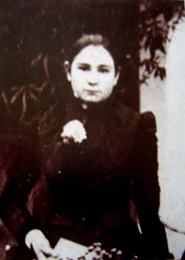Catherine Crowe
1790-1872
Catherine Ann Stevens was born in 1790 to a middle-class family who had made their fortune in the hospitality business. She was educated at home in Kent. In 1822 she married Major John Crowe and had a son the following year. The marriage was an unhappy one for Catherine, and she asked friends to help her escape in 1833. She moved to Edinburgh and began to make her living through writing, going on to enjoy significant success. Catherine Crowe wrote five novels, many short stories, two volumes of supernatural tales, two plays and some short fiction for children. The three-volume editions of her novels sold very well and two of her novels were adapted into stage plays: Susan Hopley: The Adventures of a Maidservant by George Dibden Pitt (of Sweeney Todd fame), and The Story of Lilly Dawson by Edward Stirling, noted for his many adaptations of Dickens’s work (some pirated and some, like his adaptation of ‘A Christmas Carol’, official). Throughout her life, Crowe held strong Spiritualist beliefs, describing herself as a disciple of phrenologist George Combe. In 1848 she published her ground-breaking book The Night Side of Nature, or, Ghosts and Ghost Seers. Dickens, in a review in the The Examiner, called it ‘one of the most extraordinary collections’ of ghost stories ever published, declaring that Crowe ‘can never be read without pleasure and profit, and can never write otherwise than sensibly and well’. The Night Side of Nature brought Crowe fame and a degree of fortune. It sold at least 65,000 copies in Britain and was described by publisher George Routledge as ‘a most profitable book’. In 1854, in a story that is possibly apocryphal (or at least exaggerated), Crowe was supposedly found wandering the streets of Edinburgh naked, carrying a handkerchief and a card case, believing herself invisible. The story was widely reported and discussed, with Dickens describing her as ‘stark mad’ and ‘clothed only in her chastity’. Crowe strongly repudiated the claim, but it does seem likely that she suffered some form of breakdown, believing she had been haunted by spirits. Happily, Crowe recovered and continued writing books and short stories. Towards the end of her life, she became interested in nature, publishing three treatises on seaweed. She died in Folkestone in 1872.
